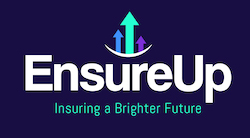Flood zones and flood maps are crucial when it comes to understanding your flood insurance. These tools are used by the Federal Emergency Management Agency (FEMA) to identify areas that are at high risk of flooding. The purpose of these maps is to help people understand the likelihood of flooding in their area, and to assist in the development of flood insurance policies.
There are several different flood zone designations that are used on flood maps. These include:
- Special Flood Hazard Areas (SFHAs) – These areas have a 1% chance of flooding each year, also known as the 100-year flood. These areas are considered to be at the highest risk of flooding, and it is typically required that homeowners in these areas carry flood insurance.
- “A” zones: These are areas that have a 1% annual chance of flooding, also known as the 100-year floodplain. These are considered to be the highest risk areas for flooding. These are areas close to rivers, canals, and other waterways
- Moderate to Low Flood Risk Areas – These areas are considered to be at lower risk of flooding, and it may not be required that homeowners carry flood insurance in these areas
- “B” & “X” zones: These are areas that have a lower risk of flooding, but are still considered to be at moderate risk. “C” zones are considered to be of minimal risk to flooding
- Coastal High Hazard Areas – These areas are located along coastlines and are at a higher risk of flooding due to storm surges.
- “V” zones: These are areas that have a coastal high hazard, such as the risk of storm waves, and are considered to be very high risk for flooding. Examples of this would be beaches and areas close to large and open bodies of water.
It’s important to note that just because a property is not located in a SFHA does not mean it is not at risk of flooding. Floods can happen anywhere, so it’s always a good idea to consider purchasing flood insurance, even if it is not required by your mortgage lender.
When purchasing flood insurance, it’s important to understand that standard homeowners insurance policies do not cover flood damage. This is why it’s important to purchase a separate flood insurance policy through the National Flood Insurance Program (NFIP) or through a private flood insurance company.
It’s also important to understand that flood insurance policies have different coverage limits than your home insurance policy,, and it’s crucial to review these limits to ensure that they are adequate for your home’s needs. The NFIP can only insure your home up to $250,000 so private insurance might be appropriate if the cost to rebuild your home in the event of a loss would be more than this amount. Additionally, it is important to review the exclusions of your flood insurance policy to understand what is not covered.
In conclusion, understanding flood zones, flood maps, and how they impact your flood insurance is essential. By taking the time to research and understand these factors, homeowners can be better prepared and protected in the event of a flood. And remember, always talk to a local independent insurance agent to understand your options and get the coverage that is right for you. Feel free to call us (305) 452-0587 or email us at info@ensureup.com for a flood insurance quote.
